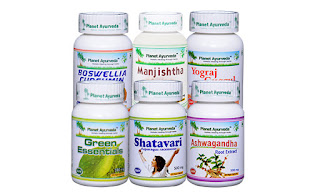What is Ehlers-Danlos Syndrome, the Beighton Score and Brighton Criteria?
 |
| source |
EDS is an inherited disorder first described in ancient times by Hyppocrates as a bruising and bleeding condition. Two modern doctors came up with similar observations about certain patients they had, recognising it as a distinct condition related to connective tissue - Dr Evard Ehlers, in 1901 and Dr Henri-Alexandre Danlos in 1908. In the 1960s genetic makeup to identify the condition was established but it wasn't until 28 years later that a classification test was first designed, called the Beighton score to identify individuals with hypermobillity of their joints. (there are other types of EDS).
The interesting thing about the Beighton score is that it's not perfect, but used in conjunction with the Brighton Criteria can help specialists diagnose Connective Tissue Disorders. Every person is unique in how their symptoms manifest. For instance, I can touch the ground with my legs straightened, bend my little finger back at an alarming angle, touch my head with my foot whilst standing on one leg. My knees can be pushed backwards slightly, but I fail the wrist stretch. My knees sublux (the kneecaps dislocate) but no other joint. My skin is very soft and stretchy and so are my blood vessels, (making POTS much easier to diagnose).
The Beighton score diagram above is deceptively simple and doesn't cover all the bendy areas of my body. The scoring, however, is complex. Together with the Brighton Criteria, it helps specialists such as a Rheumatologist or Cardiologist make a correct diagnosis of Ehlers-Danlos Syndrome, which is one of the Connective Tissue Disorders.
 |
| source |
Bendiness seems an asset if you are a gymnast or dancer, but the pain of over-extension can be excruciating and debilitating. Strengthening muscles around joints is key, but must be done carefully, under the supervision of a health professional who understands the condition.
After a car accident at the age of 35 which destroyed disc C 5/6 in my cervical spine I was sent for hydrotherapy, weight training in a gym and later Pilates. Absolute disaster! Undiagnosed with EDS hypermobility I was just making things worse by following the instructions of my rehab specialist at the time. The only therapy that later worked for me was Prolotherapy, injections of dextrose into joints and ligaments to stimulate the body to heal. And even that was temporary. As soon as I started exercising and stretching again, the benefits disappeared. Healing takes time and requires doing NOTHING but rest. Stretching a damaged area is the worst thing someone with connective tissue disorder can do after an injury. Others may disagree with this, but it's my experience. When I overdo things, rest is the only way forward, then gently returning to activities.
As you can imagine, there are lots of mental and emotional issues surrounding EDS hypermobility and POTS. Once you have a diagnosis you can feel a sense of relief that someone knows what the hell is wrong with your body, that you are finally validated as not being crazy or a malingerer. Then the grief sets in. I struggled with it on and off for almost two years. But sooner or later you have to buckle up and do your best to manage the condition. And this positive attitude can make a huge difference to your experience day by day. Educating your family and friends can be challenging, but if your partner is onboard, life is SO much easier! I am very lucky that my husband took onboard what the specialist said. In fact, he agreed 100% and could see how these symptoms have played out through our life together.
It's a relief to be believed.
So, if you think you may have this genetic condition, the first step is to talk to your GP and get a referral. With the advent of Covid we no longer have to physically visit a specialist, which opens up a whole world for us. Especially given that travelling long distances is challenging when you're living with POTS!
I hope this information has been helpful to you. Best of luck on your journey!


Comments
Post a Comment